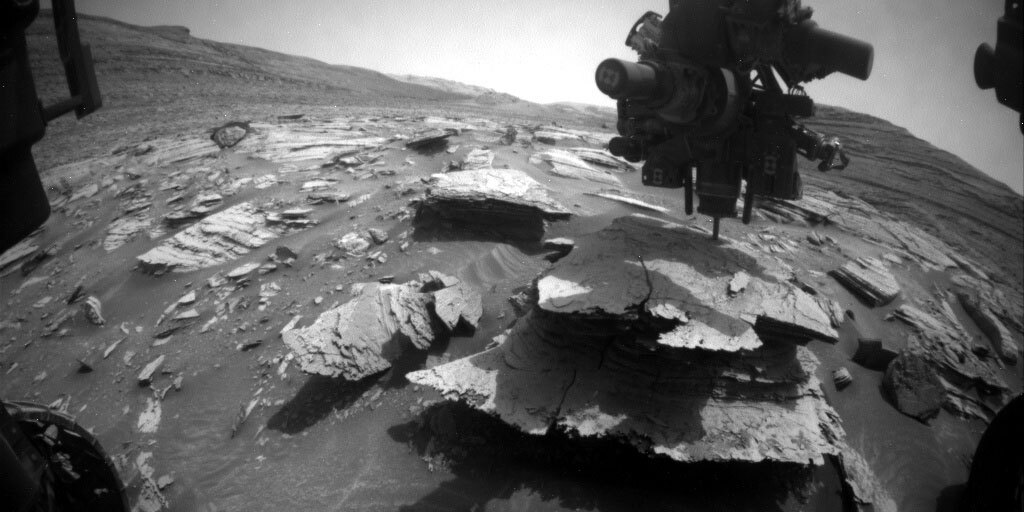3 min read

Earth planning date: Friday, March 15, 2024
Just prior to planning we found out the drilling attempt on Mineral King 3 unfortunately didn’t reach a depth suitable to collect samples for analysis. So, in a manner very similar to a quick-change backstage at the theatre, we altered our plan of action just minutes prior to planning. Instead of sending the drilled sample for analysis like we were able to do for Mineral King, Curiosity is driving away. Our incredible rover planners had already figured out where the rover was going to drive next, so it was down to the science team to figure out how to merge the science observations into the new plan.
On the first 2 sols of this plan, prior to driving away, APXS will take measurements on the shallow drill attempt at ‘Mineral King 3,’ as there are some drill tailings present. ChemCam has packed the plan with activities including the final LIBS observations in this workspace on some nodular rocks of interest ‘Wishorn Reservoir’ and ‘Diamond Mesa.’ ChemCam will then take an RMI mosaic of a sand trough named ‘Centre Basin’ near the rover, as well as two long distance RMI mosaics of ‘Texoli,’ and ‘Dragtooth’ buttes. Mastcam will take the standard documentation images on the ChemCam LIBS observations, as well as a final change detection image of ‘Florence Peak,’ a sand ripple in the workspace we have been monitoring for a few weeks to see how much it moves over time. Mastcam also have some larger mosaics planned including extensions of previously imaged areas including the drilling location ‘Mineral King,’ as well as targets ‘Consultation Lake’ and ‘Cottonwood Pass.’ During this plan we also have a range of environmental monitoring activities: Mastcam will be used for a sky survey, and Navcam will be searching for dust devils and will be used to take a suprahorizon movie.
Curiosity will then drive closer to ‘Fascination Turret,’ part of the Gediz Vallis Ridge to inspect an area of geologic interest to the team. When the rover arrives at our new workspace, it will take a Navcam mosaic, and a MAHLI image of the wheels. We then instruct the rover to automatically pick a ChemCam LIBS target to make the most of the science time and give us some preliminary data to analyse when we come into planning on Monday. These types of planning days, although often hectic, show the power of pre-planning and highlight all the work that happens backstage on this efficient rover team.
Written by Emma Harris, Graduate Student at Natural History Museum







